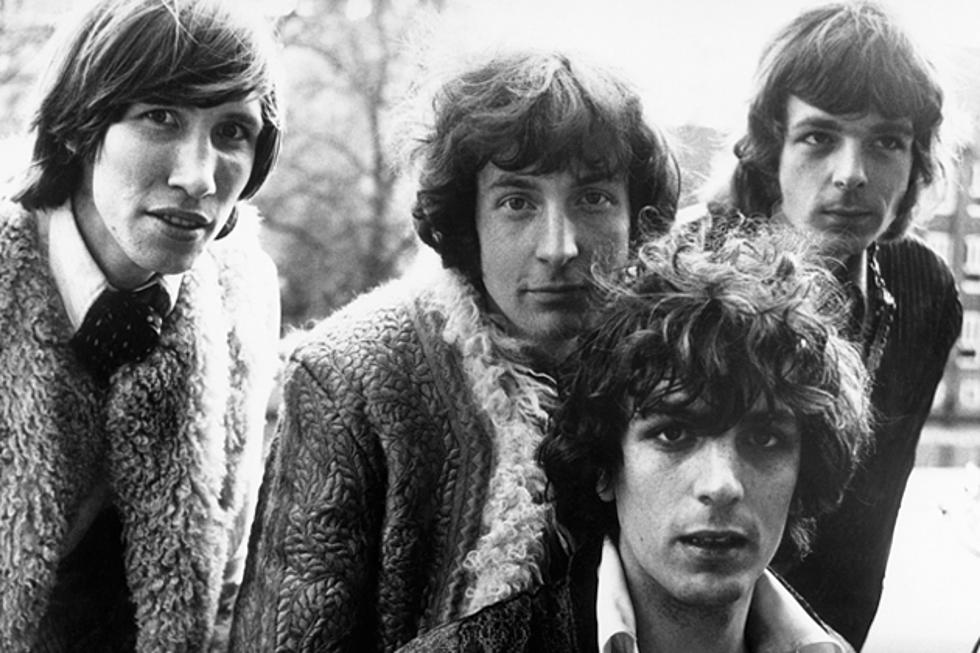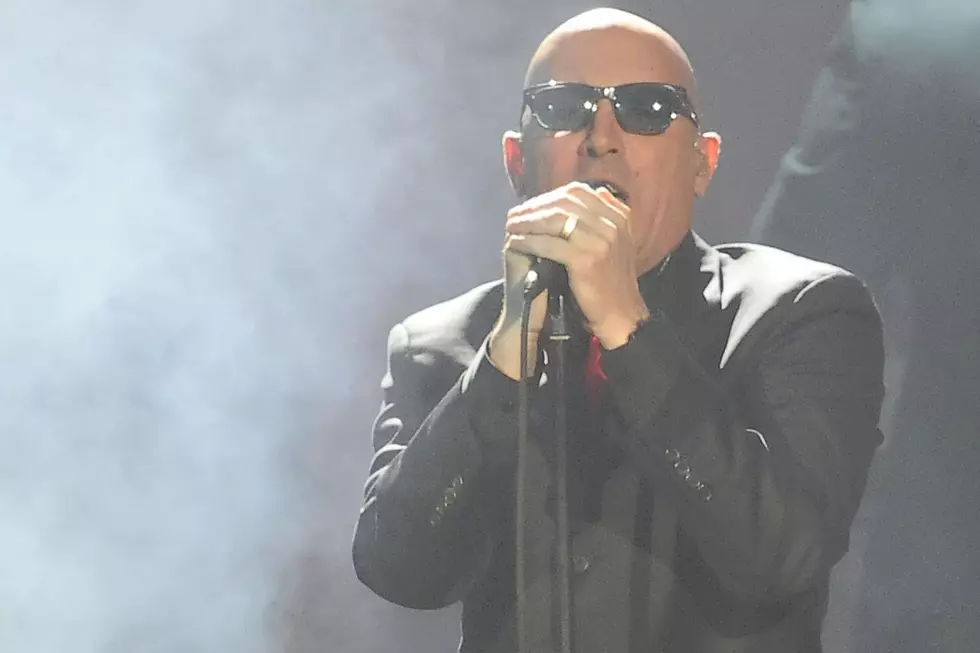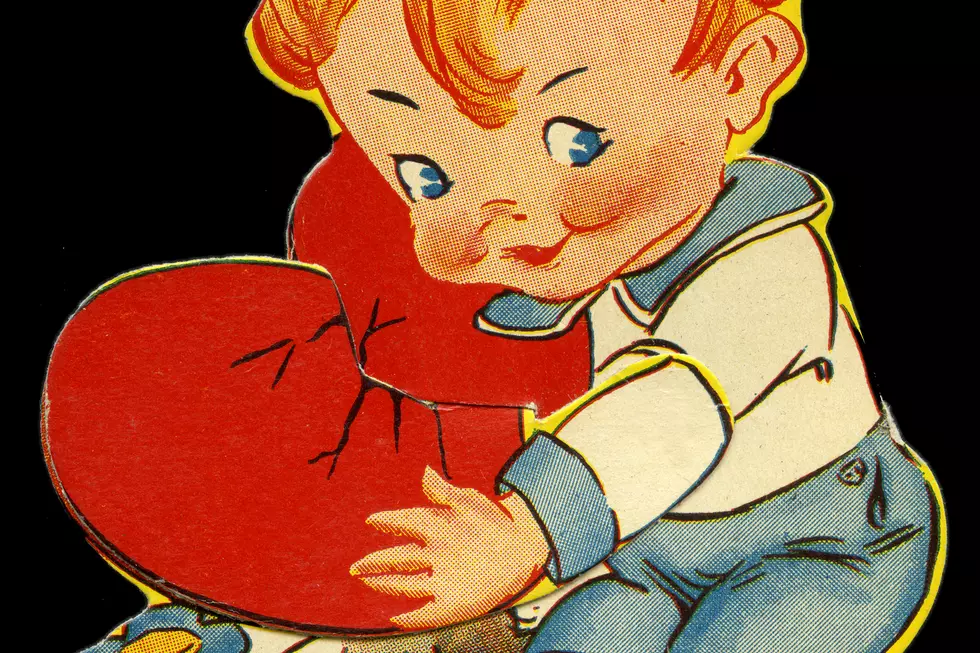
10 Essential Albums from the Psychedelic Past
On Nov. 16, 1938, Swiss chemist Albert Hoffman first put together the ingredients that would unleash the means to explore other dimensions, both inside and outside of one's self. Five years later, on April 19, 1943, Hoffman realized everything this new drug had to offer when, after ingesting the substance, he went on an innocent bicycle ride. As the LSD took hold, the world around him changed dramatically. This is the first recorded "trip," but certainly wouldn't be the last.
By the early '60s, experimental use of the then-legal drug began taking place in a wide variety of places. Underground figures -- including many a musician -- were lining up for their very own "bicycle ride." The desire to create music that reflected and or simulated the experience took firm hold and rather quickly, rock and roll had been psychedelicized. Those explorers would create some of the most intriguing, mesmerizing and incredible music ever made.
Perhaps certain aspects of the era have not aged as well as others, but more often than not, the sounds shine brighter than ever. While the list could be endless, we've curated a smattering of essentials from those heady days. The music here requires no actual medication to enjoy by they way; the sounds alone are a trip unto themselves. So, as the saying goes ... "Tune in, turn on and rock out," these are our 10 Essential Albums from the Psychedelic Past.
The 13th Floor Elevators
'The Psychedelic Sounds of the 13th Floor Elevators' (1966)The Elevators are arguably the first flat-out psychedelic rock band. Unlike the San Fransisco bands -- many of whom began life as folk acts -- or the L.A. merchants who were often at home on the pop charts as well as the freak-outs, Roky Erickson and company were unique. Taking cues from early rock and rollers, as well as contemporaries like the Rolling Stones, the 13th Floor Elevators took that straight ahead rock and roll energy and molded it into something brand new. The album was released in Aug. of 1966, right around the corner from the release of the Beatles' 'Revolver,' another album with absolute psychedelic sounds. The Elevators, however, were 100% entrenched there already. Their sound was dark yet bright, gentle and powerful at the same time. The raw urgency of 'You're Gonna Miss Me' side by side with the blissful 'Kingdom Of Heaven' and the highly spirited 'Roller Coaster' makes for one incredible ride of its own.
See also: 'Easter Everywhere' (1967)
Country Joe & the Fish
'Electric Music for Mind and Body' (1967)Country Joe & the Fish began life in 1965 as a folk based ensemble with definite revolutionary tendencies. By 1966, the band had transformed into a full fledged rock and roll band and with a little help from Father Hoffman, would create one of the definitive psychedelic albums of all time. Their 1967 debut album, 'Electric Music for Mind and Body,' ebbs and flows in dramatic fashion, providing a near perfect soundtrack to a new adventure. Recorded in early 1967, the album was one of the very first fully formed psych albums. Songs like 'Death Sound Blues' and 'Porpoise Mouth' are brimming with brittle guitar attack, while 'Bass Strings' is the piece de resistance of tripped out bliss. The tag at the song's end even finds Joe, not so subtly, whispering the letters L-S-D.
Donovan
'Sunshine Superman' (1966)Recorded around the same time as both the Elevators debut and the Beatles 'Revolver,' 'Sunshine Superman' was an incredible artistic leap for Donovan. From his simple yet sophisticated early Dylan inspired recordings, no one could have guessed the giant step he would take with his third album. Recording actually began in late 1965, thus predating almost everyone in the game. Donovan is backed here by some of the finest studio musicians in London including the one and only Jimmy Page on guitar. The album unfolds into this beautiful sound painting of sorts; acoustic and electric guitars mesh with sitar and keyboards to deliver, what was in many ways, the template of British psychedelia. Donovan doesn't get enough credit for being there first, so Don, we tip our hat to you sir.
Pink Floyd
'The Piper at the Gates Of Dawn' (1967)What can be said about this masterpiece that hasn't already been said countless times. Truly a landmark album, not only in the annals of psychedelia, but in the entire history of popular music. Pink Floyd took the notion of a pop song and twisted it into a new and eternally interesting creature. Before 'See Emily Play' or 'Arnold Layne,' there was really nothing quite like that, and since then, only imitations. The experimental side of the band was unique as well. Unlike the West Coast jamming of Quicksilver or the Grateful Dead, Floyd's version of 'stretching out' was rooted more in the avant garde as opposed to the blues. The song craft of Syd Barrett was but a fleeting moment in this story. As he got further out, he found it impossible to come back in. His writing after 'Piper' shone with moments of brilliance, coupled with moments of frustration. Pink Floyd would go on to incredible commercial and artistic heights but would never again create anything quite like this.
See also: The Pretty Things: 'S.F. Sorrow' (1968)
Eric Burdon & the Animals
By 1967, the Animals' Eric Burdon had left his original band behind and moved to freakier pastures. Enamored with the sights and sounds of America, Burdon set up a new version of the Animals, trading in the dirty blues and booze soaked music for some ethereal, tripped out sounds. The hints were there on records like 'San Franciscan Nights,' and 'When I Was Young,' whose flip side was the out and out LSD tribute, 'A Girl Called Sandoz.' Both those singles were released in the summer of '67, making way for 'Winds Of Change' which surfaced in the fall. The title cut opens the album and it's clear Burdon has moved on from his roots. 'Poem By The Sea' and 'It's All Meat' are incredible excursions while 'The Black Plague' is simply frightening. A dramatic rendition of the Rolling Stones' 'Paint It Black,' and the Jimi Hendrix response number, 'Yes, I Am Experienced,' are both so very much of their time -- yet all these years later -- still carry that weight and sense of adventure. A truly overlooked gem of an album.
Family
'Music in a Doll's House' (1968)Family were one of the most interesting bands on the U.K. scene in 1967 and beyond. Their debut single, the classic 'Scene Through The Eye Of The Lens,' is one of the finest singles of the era. On their 1968 debut album, the band had already begun to expand their sound and style, eventually moving into uncharted areas that would soon become known as "progressive" rock. The psychedelic edge at play on 'Music In A Dolls House' is irresistible. It avoids the trappings already in full use by every dime-a-dozen band with a whacked out name and fancy threads, instead, traveling its own path to musical enlightenment. You can't get much more psychedelic than that now can you?!
Jefferson Airplane
'After Bathing at Baxter's' (1967)Following the stunning 1966 debut, 'Takes Off,' Jefferson Airplane lost original singer Signe Anderson. Her replacement, Grace Slick, would take the band into the pop charts with 'Somebody To Love' and 'White Rabbit,' one of the most unlikely songs to ever become a hit. After the success of the 'Surrealistic Pillow' album from where those came, the band decided to delve deeper into themselves, sonically and psychedelically. 'After Bathing At Baxter's' is a free flowing wild ride with the appropriate mix of beauty and chaos to ensure you will not haze out. 'The Ballad of You and Me and Pooneil' kicks things off in a powerful way. The vocals of Slick and guitarist Paul Kantner were a force unto themselves. At this point in their history, original leader Marty Balin had been pushed to the background by the team of Kantner and Slick as most of the shots called here were of their doing. 'Martha' resonates with beauty while 'Two Heads' is an unexpected jolt. Though nowhere near the big hit the previous album was, it was a very important step for the band as they tested themselves and their audience. All in all, a brilliant album.
Silver Apples
'Silver Apples' (1968)Utterly unique even at the time, Silver Apples set up their own camp unlike any other rock and rollers of the time. The Apples were a duo comprised of drummer Danny Taylor and Simeon, who played synthesizer. The sound they created was other worldly and earthbound at the same time. There is a definite New York City grit amidst the layers of spacey sounds. The songs, all melodic, are haunting and intriguing. But is it psychedelic? Yes and no! It is void of any trappings of the genre and yet, it propels itself in a like minded manner. The idea of this kind of duo set up would be expanded upon a couple years later with the formation of Suicide, who would give this approach a somewhat darker edge.
Can
'Monster Movie' (1969)Can took rock and roll down uncharted paths during their incredible lifetime. Mixing elements of the avant garde, music concrete, Indian music, pop and chaotic rock and roll, these German pioneers would light up anyone who tuned into them. On their debut from 1969, 'Monster Movie,' there are hints of the Velvet Underground and a whiff of the Beatles influence, but their sounds were born mostly out of their own collective mind. The LP opener, 'Father Cannot Yell,' is a driving machine colored with bits of distortion and chaos while the closer, 'Yoo Doo Right,' is nearly 20 minutes of hypnosis. The guitar work of Michael Karoli is jarring while the rhythm section of drummer Jaki Liebzeit and bassist Holger Czukay is a powerhouse. Their legend has continued to grow throughout the years.
See also: Amon Düül II - 'Yeti' (1970)
The Grateful Dead
'Anthem of the Sun' (1968)The Grateful Dead‘s self-titled debut album from 1967 was a casserole of folk, rock and blues with shades of psychedelia. Great as it was, it didn’t quite capture the live Dead experience. On album number two, ‘Anthem of the Sun,’ they set out to bring their celebrated concert experience into the studio. In the documentary ‘Anthem to Beauty,’ guitarist Jerry Garcia recalled, “Our strategy was, we wanna play in the studio, we wanna learn how the studio works." The band’s contract at the time gave them unlimited studio access, an unheard of provision back then. The album mixes studio wizzardry with live recordings, then back again. In an attempt to create a seamless trip from stage to studio, they employed a wide variety of sounds and emotions, often veering from the subtle to the insane within moments. The ragged and raucous blast of 'That's It for the Other One' gives way to the gentle beauty of 'New Potato Caboose' without missing a beat. By the time of their third album, 'Aoxomoxoa,' they had found a firm footing in the studio, but this wild experiment is where the sky cuts loose from the earth.
More From Diffuser.fm









